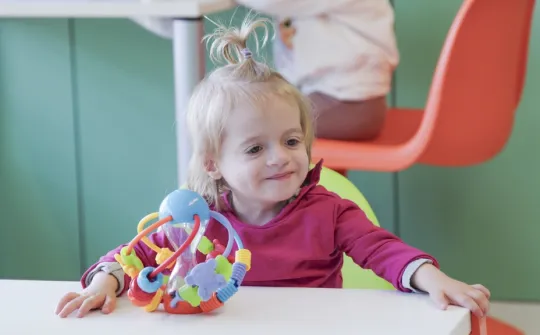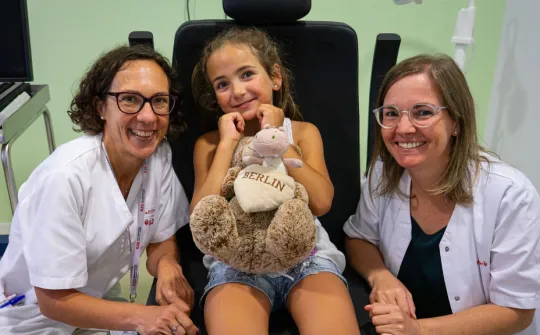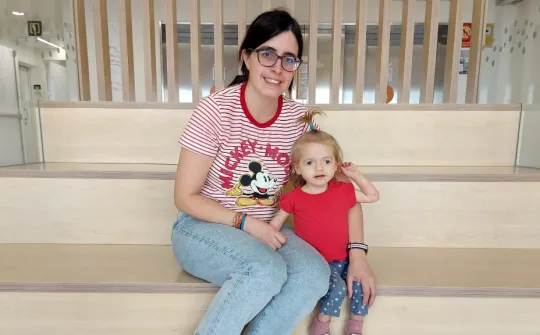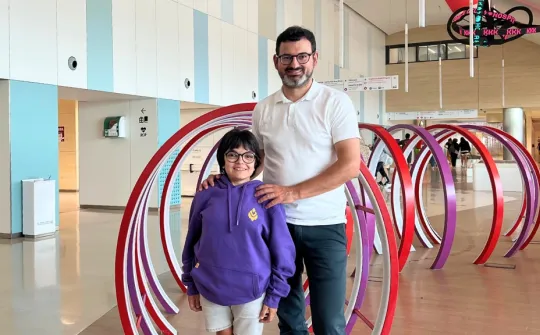‘We are thankful for the tireless work of these professionals who think of Sofía everytime an opportunity arises to try to diagnose her disease’
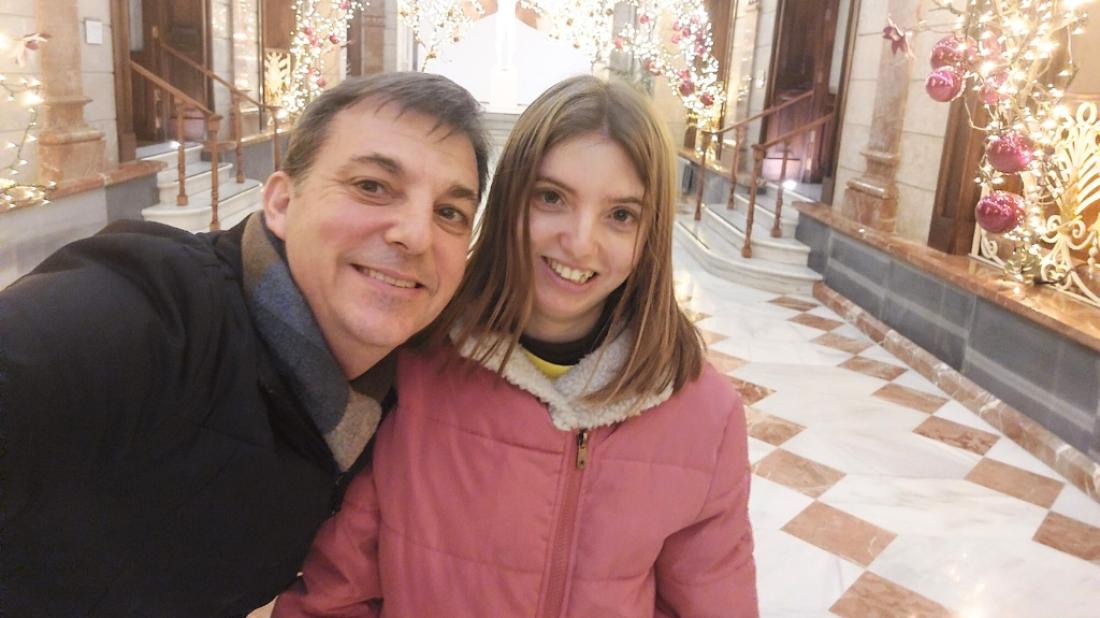
This young Murcian, who has been waiting her whole life for a diagnosis, was one of 12 cases analysed by experts from around the world at the Hackathon for rare pediatric diseases.
At present, children with rare diseases wait an average of six years before getting a diagnosis. Some of them—around 20% of those who do finally get diagnosed—had to wait more than ten years. Sofía exceeds both of these timeframes. This 19-year-old's family has spent practically her entire life going from appointment to appointment, submitting her to testing and taking part in unsuccessful studies. Her case is one of 12 that hundreds of experts from around the world analysed at the Únicas Hackathon for rare pediatric diseases this October, organised by the SJD Barcelona Children’s Hospital and the Virgin of Arrixaca University Clinical Hospital.
Sofía's father remembers that the first warning sign they noticed that their daughter was suffering from something serious was when she was just nine months old. ‘Sofía lost consciousness’ and she was taken to the Emergency Department, where she was hospitalised for several days. ‘Until then, we didn't think it was anything serious. We were first-time parents and had no other children to compare our experience to. We saw that she struggled to sit upright and her pediatrician thought nothing of it, so we didn't think it was anything important until she had that seizure,’ recounts Juan Antonio.
After the incident, the parents took the child to a neurologist, and started attending appointments at the Virgin of Arrixaca University Clinical Hospital. Over the four years that her epileptic seizures occurred, other health problems began to manifest: digestive, renal, traumatology-related, etc. The list of professionals from various specialisations who treat or have treated Sofía has grown over the years. At present, Sofía exhibits a significant developmental delay and an 85% degree of disability.
But what disease is causing all of these issues and her disability? ‘They always said it was a genetic disease, but all of the studies that have been done to find out which gene the abnormality is in have been for nothing. I remember that one test found a translocation in a gene, but it was ruled out as being related to her disease because it turns out I also have that same translocation,’ explains Juan Antonio.
Únicas Network
The staff at the Virgin of Arrixaca University Clinical Hospital who have been treating Sofía since she was a baby have never given up in all these years. This hospital is part of the Únicas Network, which consists of 30 Spanish hospitals, is promoted by the SJD Barcelona Children's Hospital and led by the Ministry of Health. The Únicas Network aims to provide a coordinated response to patients with rare diseases to improve their care, ensure access to the most advanced treatments, regardless of where the patients live, and to reduce the time it takes to reach a diagnosis.
In this spirit of cooperation and with the aim of improving diagnosis for patients, a Hackathon was held in Murcia –a coming together of experts from vastly different fields, such as bioinformatics or genetics, whose mission is to try to decipher highly complex cases like Sofía’s. ‘We are so thankful for the tireless work of these professionals who think of Sofía everytime a new opportunity arises to look at her case again and to try to diagnose her disease. It’s particularly important for us because we also have a son, and if one day he wants to become a father, we would like him to be able to know which disease his sister has and, if possible, avoid passing it to his children,’ admits Juan Antonio.
Having a diagnosis would also open doors to finding a new treatment for Sofía because, in the words of Juan Antonio, ‘until now, the best treatment for Sofía has been stimulation therapy to help her be as independent as she can be.’
